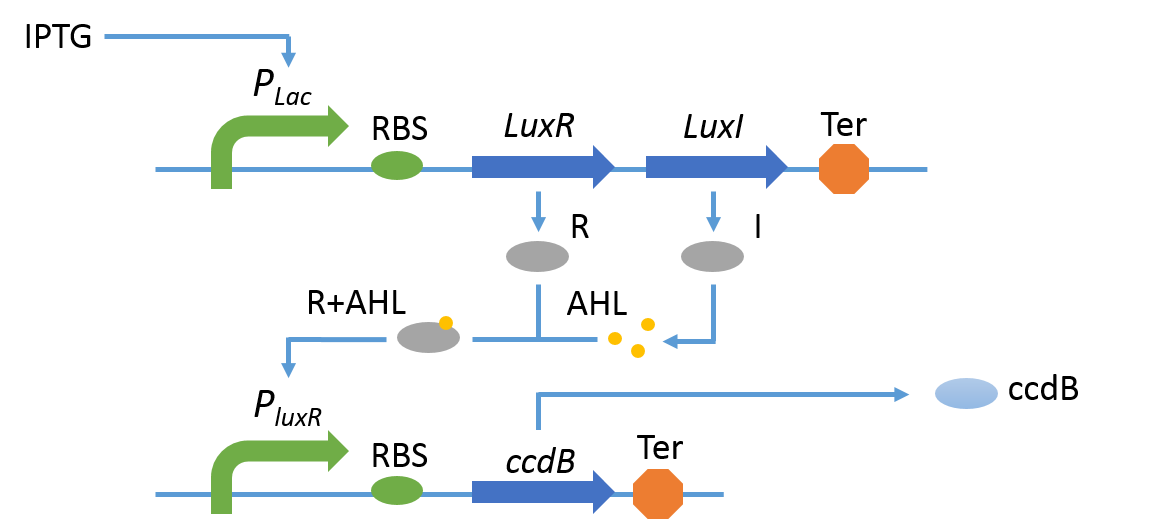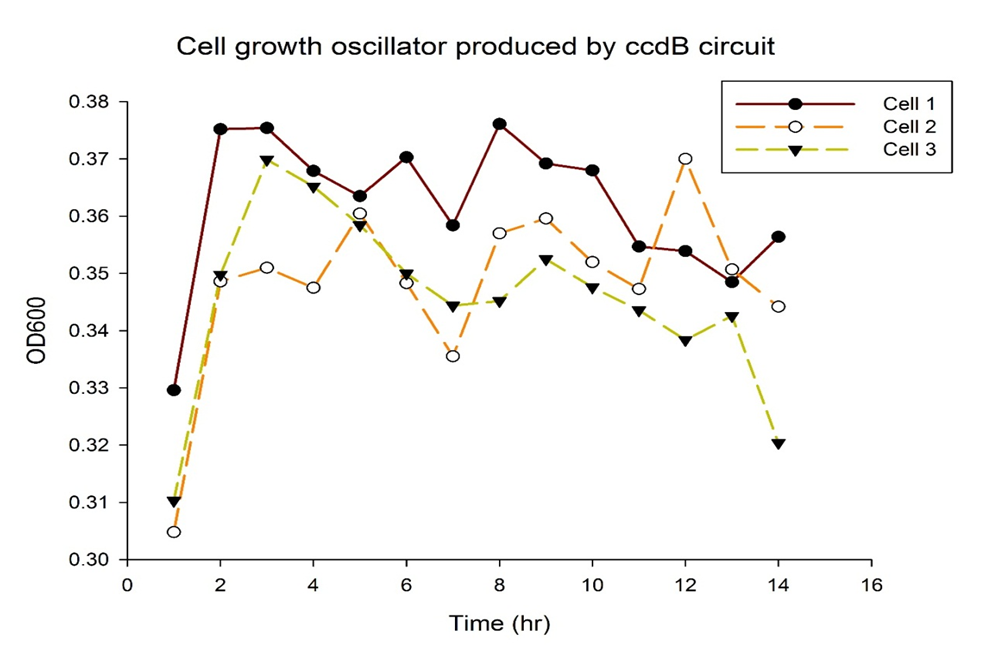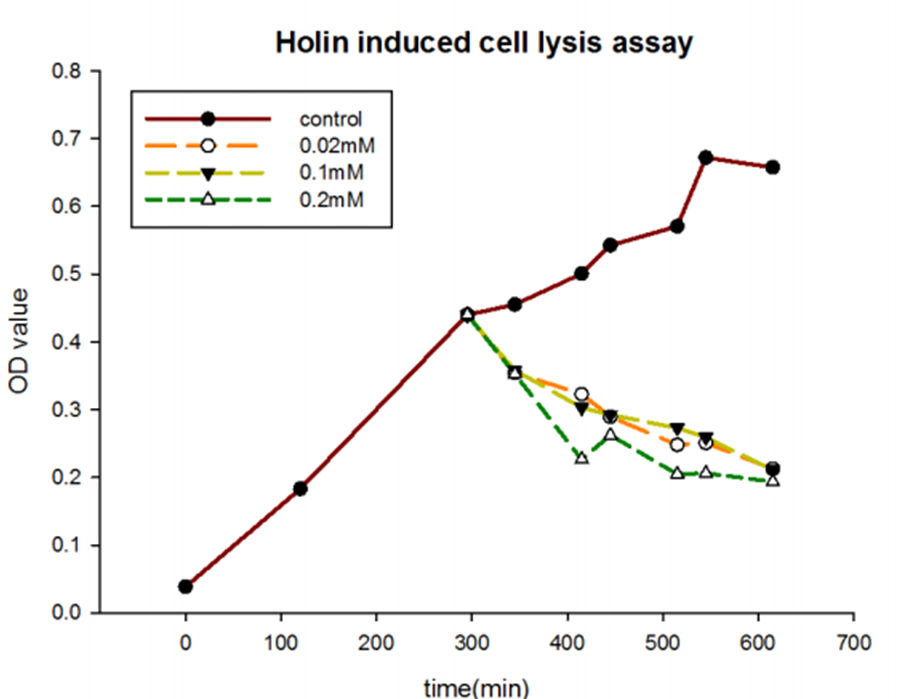Team:ZJU-China/Project/Safety/EcoliSuicide
From 2013.igem.org
Safety Part Ⅱ : E.coli Suicide
Contents |
Overview
Our engineered cells are aimed to solve environmental problems on the premise that they themselves are safe. Two problems are in desperate needed to be tackled.
- How to prevent engineer bacteria overgrowth?
- How to prevent engineered plasmids penetrating innocent cells?
To answer these questions, we construct a dual-function system. It includes:
- A population control modality which serves to automatically limit the engineered bacteria concentration in a narrow range
- A safeguard circuit by which the horizontal transfer of engineered plasmids are prevented
ccdB circuit
A previously well-designed plasmid in which ccdB, luxR and luxI are plugged functions as a gene oscillator by virtue of ccdB, a gene widely postulated as an inhibitory factor during DNA replication. By incorporating quorum sensing components like luxR and luxI, the circuit works automatically with the trigger of the addition of inducer molecules.
We have experimentally proved that ccdB-circuit is powerful enough to stabilize bacteria concentration.
Fig.1 Cell growth oscillator produced by ccdB circuit
Antiholin-holin system
Antiholin-holin system has been characterized to preclude horizontal gene transfer (HGT), and thus enable stronger safety in synthetic biology. Previous descriptions mainly focus on antiholin-holin in phage. In our experiment, we try to clone antiholin and holin from Bacillus, in which antiholin is a two-component pattern comprising LrgA and LrgB. By inserting them to two plasmids in one cell respectively, the system owns the capacity of fulfilling two critical functions:
- To prevent HGT
- To discriminate intact engineered cells and those with loss of plasmids
In light of evolution, we endow engineered bacteria with all the plasmids we transformed with the strongest survival possibility, as antiholin-deficient bacteria have compromised function in prohibiting cell wall from being perforated.
Fig.2 Growth curve of BL21 E.coli cells induced by different concentrations of IPTG
The two aforementioned systems are both based on previous work. However, with appropriate modification and innovation, we are looking forward to exploiting them to their extreme and by that, building up a powerful tool for environmental safety.
References
[1] Balagaddé F K, You L, Hansen C L, et al. Long-term monitoring of bacteria undergoing programmed population control in a microchemostat[J]. Science, 2005, 309(5731): 137-140. [2] Groicher K H, Firek B A, Fujimoto D F, et al. The Staphylococcus aureus lrgAB operon modulates murein hydrolase activity and penicillin tolerance[J]. Journal of bacteriology, 2000, 182(7): 1794-1801.
 "
"













